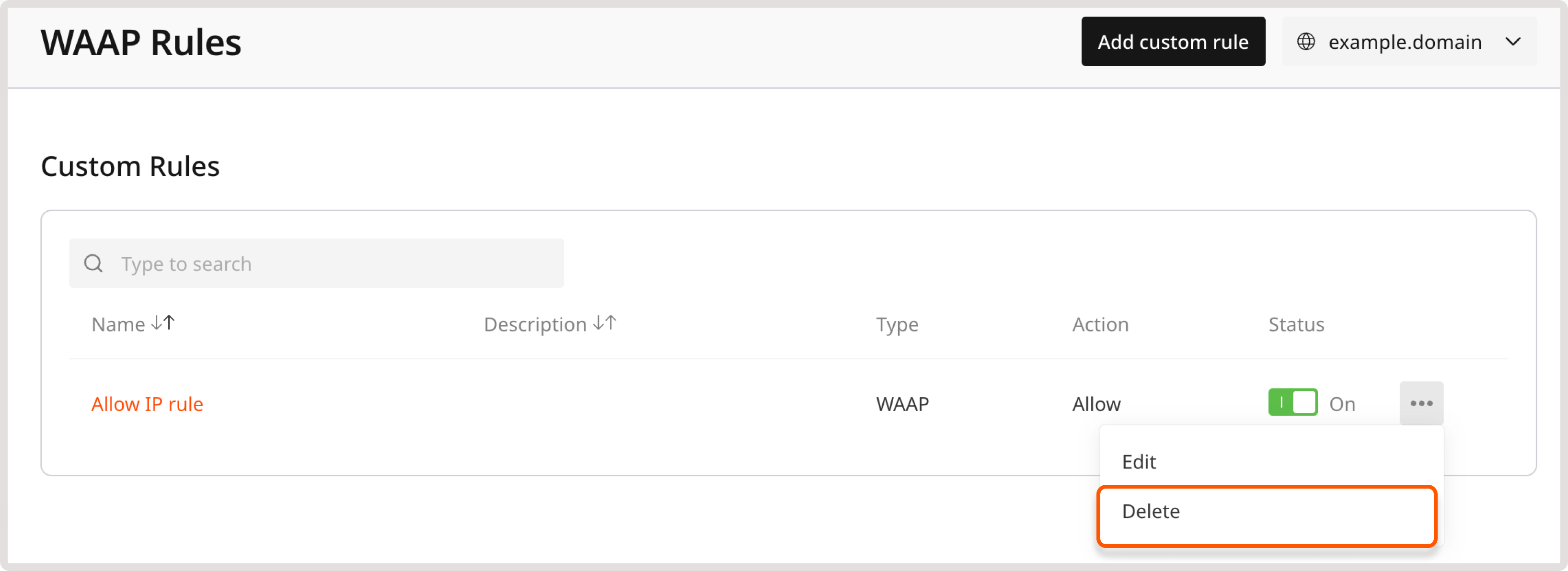Create custom WAAP rules
These rules come with great customization: you can use multiple conditions and constraints to tailor rules to a specific use case. To create a new WAAP rule: 1. In the Gcore Customer Portal, navigate to WAAP > Domains.
- Rule name : enter a descriptive name for your rule.
- Rule status : enable this toggle if you want to activate the rule after creation. Otherwise, the rule will be disabled, and you’ll need to enable it later.
- Rule type : choose WAAP rule.
- Description (optional): provide more context about your rule.
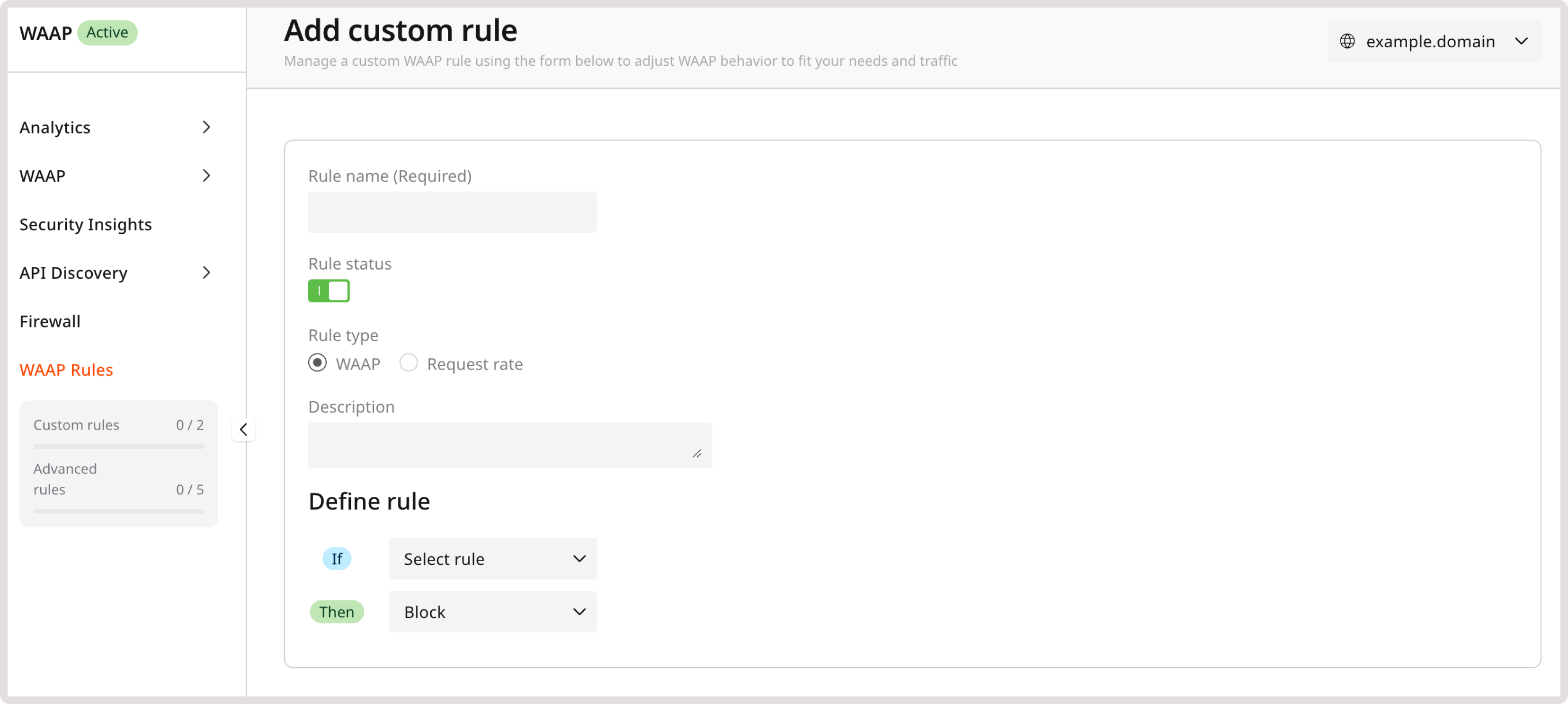
Examples of custom rule definitions
This section provides examples of custom rules that are configured with different types of conditions.Rules with IP conditions
Rules that contain the IP condition allow you to enforce security controls on incoming traffic based on the IP address of a request. You can create rules to manage traffic for both IPv4 and IPv6 addresses. To create a rule: 1. In the IF section, select IP from the dropdown. 2. In the following dropdown, select Not to apply the rule to every IP address except for the specified one. To apply the rule only to the specified address, select —. 3. Enter the IP address. To enter multiple addresses, separate each address with a comma. 4. (Optional) Select another condition in the AND section. 5. In the THEN section, select the needed action that will be enforced when the rule is triggered. 6. Click Save.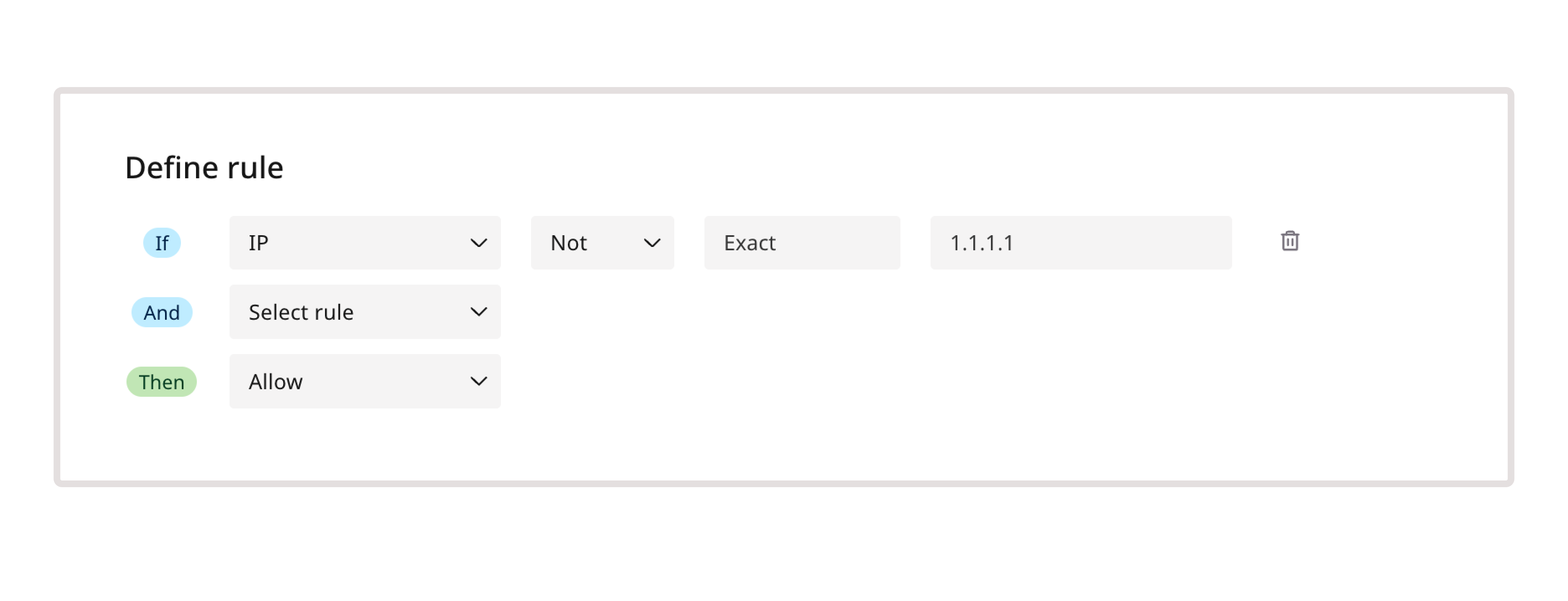
Rules with IP range conditions
Rules that contain the IP range condition allow you to enforce security controls on incoming traffic based on the specified IP address range. You can create rules to manage traffic for both IPv4 and IPv6 addresses. To create a rule: 1. In the IF section, select the IP range from the dropdown. 2. In the following dropdown, select Not to apply the rule to every IP range except for the specified one. To apply the rule only to the specified range, select —. 3. In the text fields, enter the first and the last addresses of the IP range. You can specify up to 30 networks in a single range. Subnet masks are not supported. 4. (Optional) Select another condition in the AND section. 5. In the THEN section, select the needed action that will be enforced when the rule is triggered. 6. Click Save.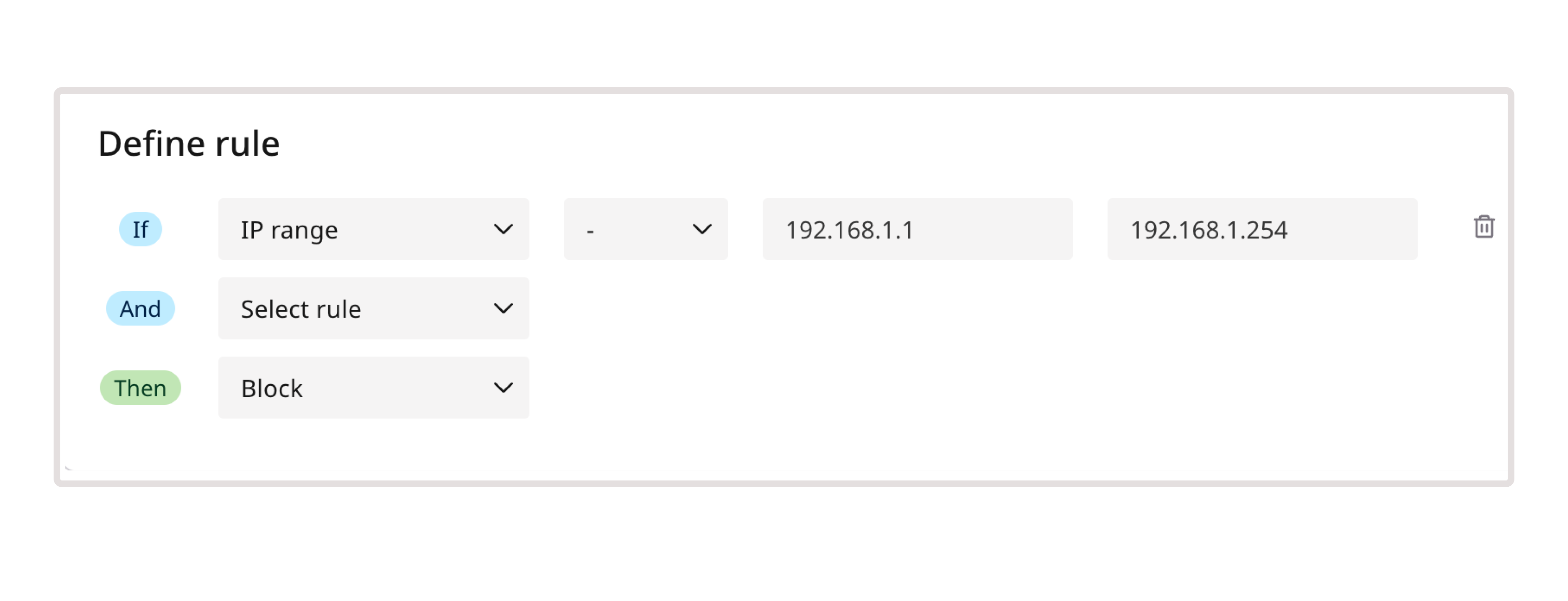
Rules with URL conditions
Rules that contain the URL condition allow you to enforce security controls on incoming traffic based on a specific URL. To create a rule: 1. In the IF section, select URL from the dropdown. 2. In the following dropdown, select Not to apply the rule to every URL except for the specified one. To apply the rule only to the specified URL, select —. 3. Define match criteria:-
Select Equals to apply the rule only when the requested URL exactly matches the specified one. For example, if the specified URL is
/blog, then when a request is made to/blog, the rule will trigger. If a request is made to/blogarticle, the rule won’t work. -
Select Contains to apply the rule when the requested URL partly matches the specified one. For example, if the specified URL is
/blog, then when a request is made to/blog, the rule will trigger. If a request is made to/blogarticle, the rule will work as well.
/).
5. (Optional) Select another condition in the AND section.
6. In the THEN section, select the needed action that will be enforced when the rule is triggered.
7. Click Save.
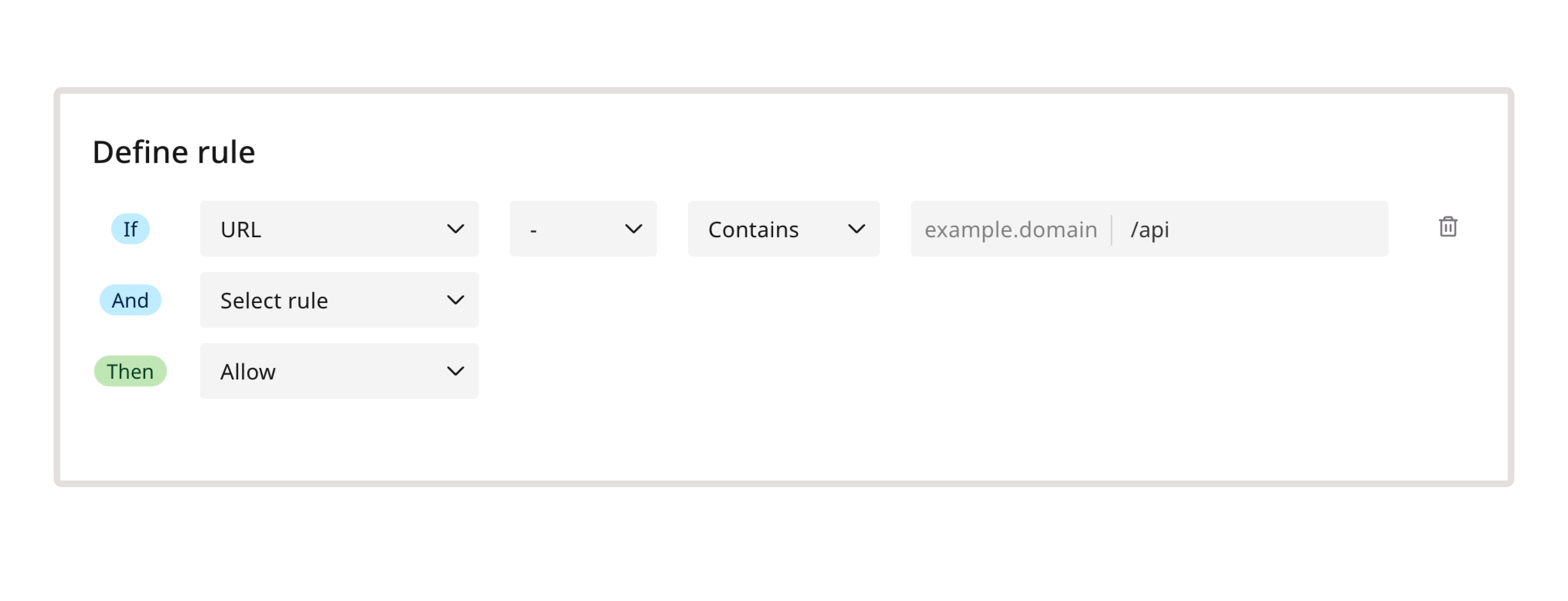
Rules with user agent conditions
Rules that contain the User-agent condition allow you to enforce security controls on incoming traffic based on the specified user agent in a request. To create a rule: 1. In the IF section, select User agent from the dropdown. 2. In the following dropdown, select Not to apply the rule to every user agent except for the specified one. To apply the rule only to the specified user agent, select —. 3. Define match criteria:- Select Equals to apply the rule only when the user agent exactly matches the one you’ve entered. For example, you might add a user agent like Mozilla/5.0 (X11; Linux x86_64) AppleWebKit/537.36 (KHTML, like Gecko) Chrome/44.0.2403.157 Safari/537.36.
- Select Contains to apply the rule when the user agent partly matches the specified one. For example, if you enter AppleWebKit, any AppleWebKit user agent will trigger the rule. You can still enter a specific user agent, and any requesting user agent that partially matches the header will trigger the rule.
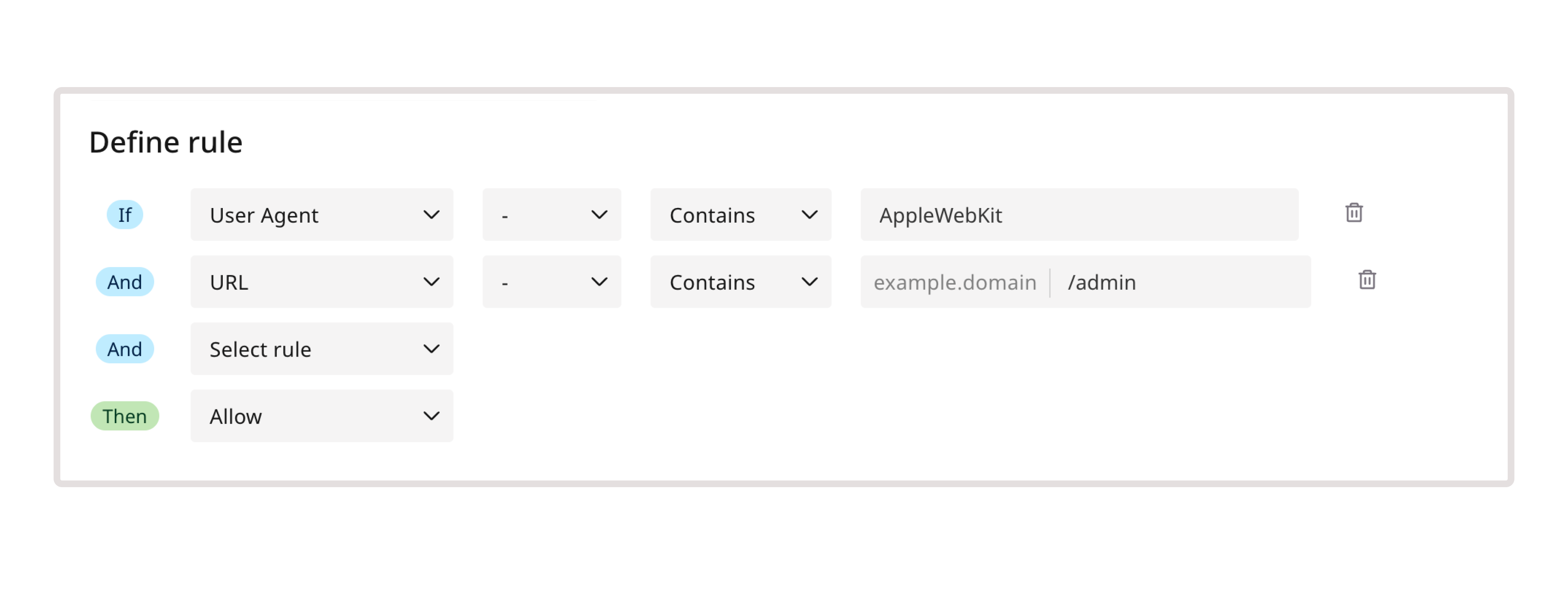
Rules with header conditions
Rules that contain the Header condition allow you to enforce security controls on incoming traffic based on request headers. In contrast to Header exists conditions, the Header ones also validate the value of the header. To create a rule: 1. In the IF section, select Header from the dropdown. 2. In the following dropdown, select Not to apply the rule to every header except for the specified one. To apply the rule only to the specified header, select —. 3. In the text field, enter a header key. 4. Define match criteria:- Select Equals to apply the rule only when the request header exactly matches what you’ve specified.
- Select Contains to apply the rule when the header partly matches what you’ve specified. In this case, you can enter a generic header, and any requesting header that matches this generic one will trigger the rule.
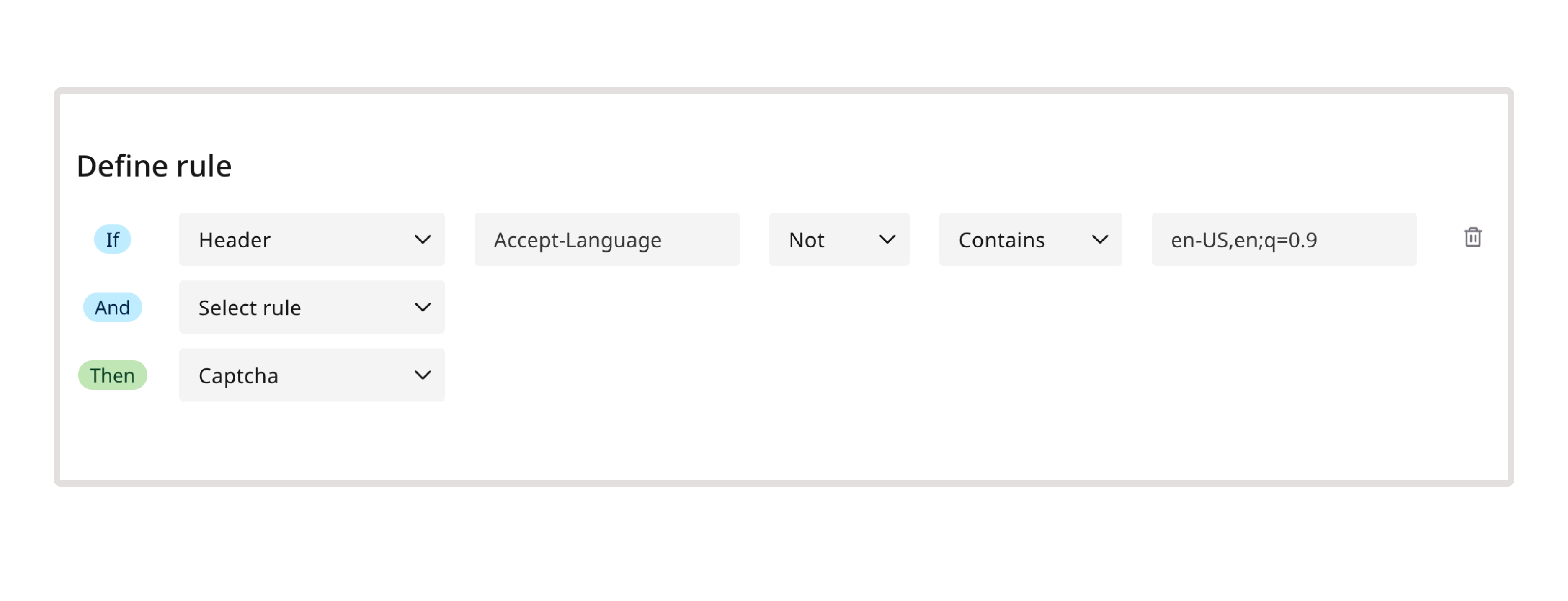
Rules with header exists conditions
Rules that contain the Header exists condition allow you to challenge requests depending on whether a specific header name is present in the request. They don’t check the header value. To create a rule: 1. In the IF section, select Header Exists from the dropdown. 2. In the following dropdown, select Not to apply the rule to every header except for the specified one. To apply the rule only to the specified header, select —. 3. Enter a header key. 6. (Optional) Select another condition in the AND section. 7. In the THEN section, select the needed action that will be enforced when the rule is triggered. 8. Click Save.
Rules with HTTP method conditions
Rules that contain the HTTP header conditions allow you to enforce security controls on incoming traffic based on provided request methods. To create a rule: 1. In the IF section, select HTTP method from the dropdown. 2. In the following dropdown, select Not to apply the rule to every method except for the specified one. To apply the rule only to the specified method, select —. 3. Select the HTTP method. 4. (Optional) Select another condition in the AND section. 5. In the THEN section, select the needed action that will be enforced when the rule is triggered. 6. Click Save.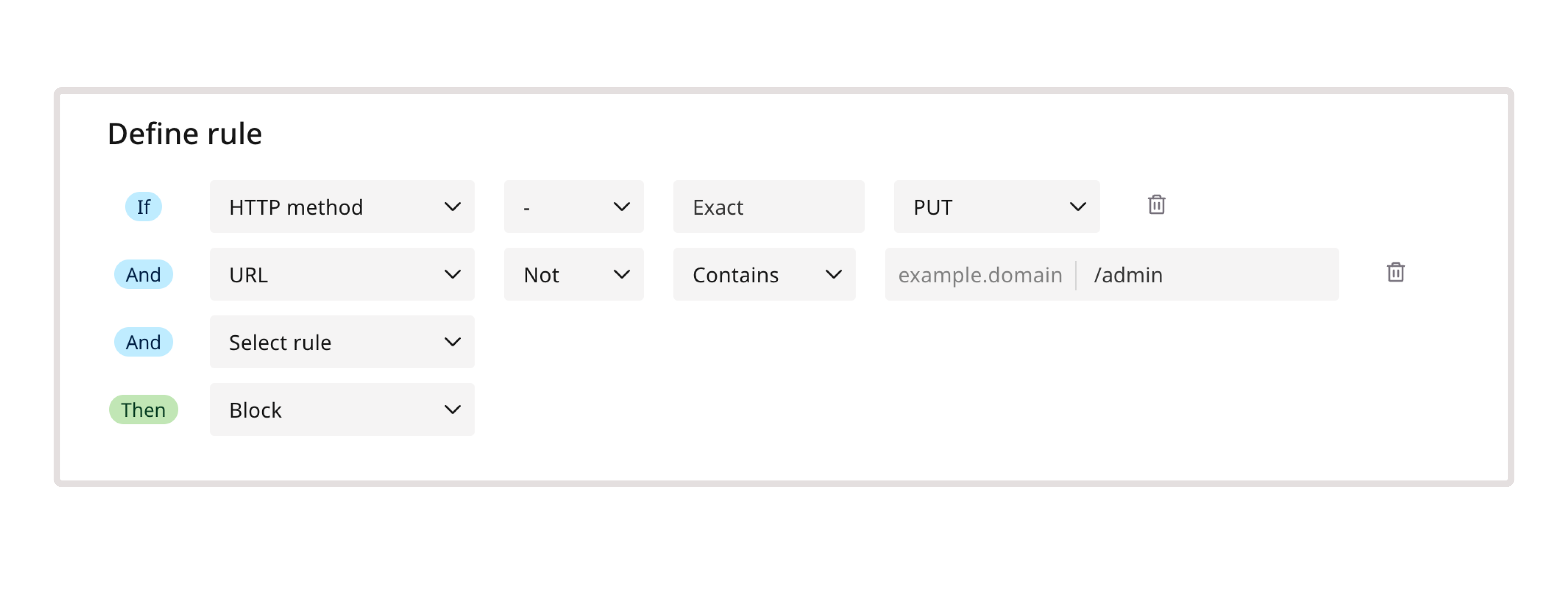
Rules with file extension conditions
Rules that contain the File extension condition allow you to enforce security controls on incoming traffic based on a file type. To create a rule: 1. In the IF section, select File extension from the dropdown. 2. In the following dropdown, select Not to apply the rule to every file except for the specified one. To apply the rule only to the specified file, select —. 3. In the text field, enter the file extension. 4. (Optional) Select another condition in the AND section. 5. In the THEN section, select the needed action that will be enforced when the rule is triggered. 6. Click Save.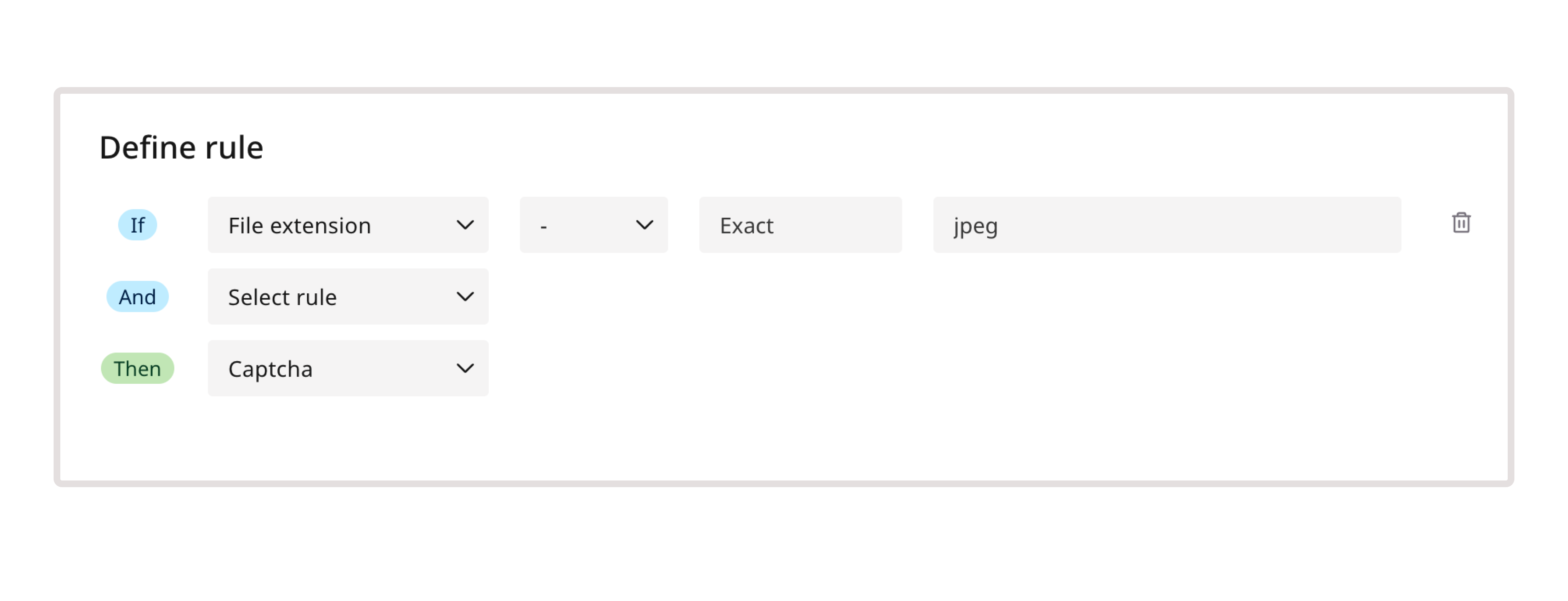
Rules with content type conditions
Rules that contain the Content type conditions allow you to enforce security controls on incoming traffic based on a specific content type. To create a rule: 1. In the IF section, select Content type from the dropdown. 2. In the following dropdown, select Not to apply the rule to every content type except for the specified one. To apply the rule only to the specified type of content, select —. 3. In the text field, enter the content type. 4. (Optional) Select another condition in the AND section. 5. In the THEN section, select the needed action that will be enforced when the rule is triggered. 6. Click Save.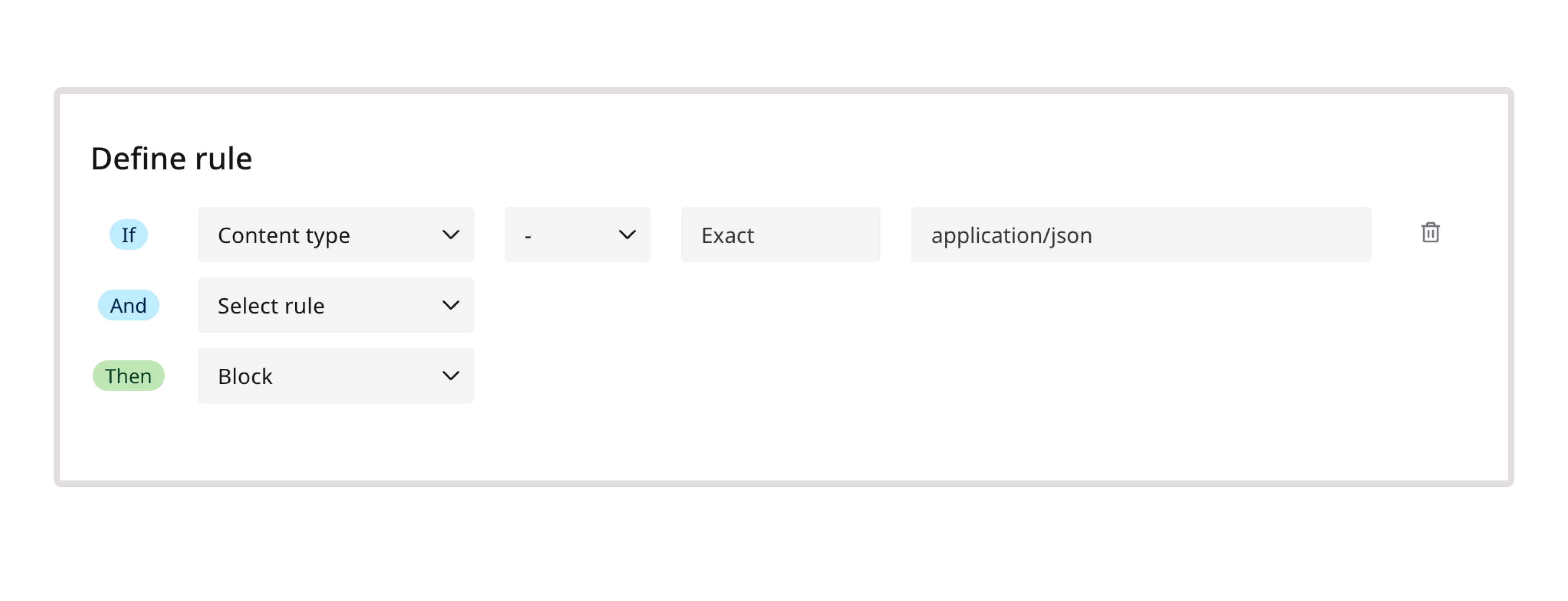
Rules with country conditions
Rules that contain the Country condition allow you to enforce security controls on incoming traffic based on the country that the request comes from. To create a rule: 1. In the IF section, select Country from the dropdown. 2. In the following dropdown, select Not to apply the rule to every country except for the specified one. To apply the rule only to the specified country, select —. 3. Choose the country. 4. (Optional) Select another condition in the AND section. 5. In the THEN section, select the needed action that will be enforced when the rule is triggered. 6. Click Save.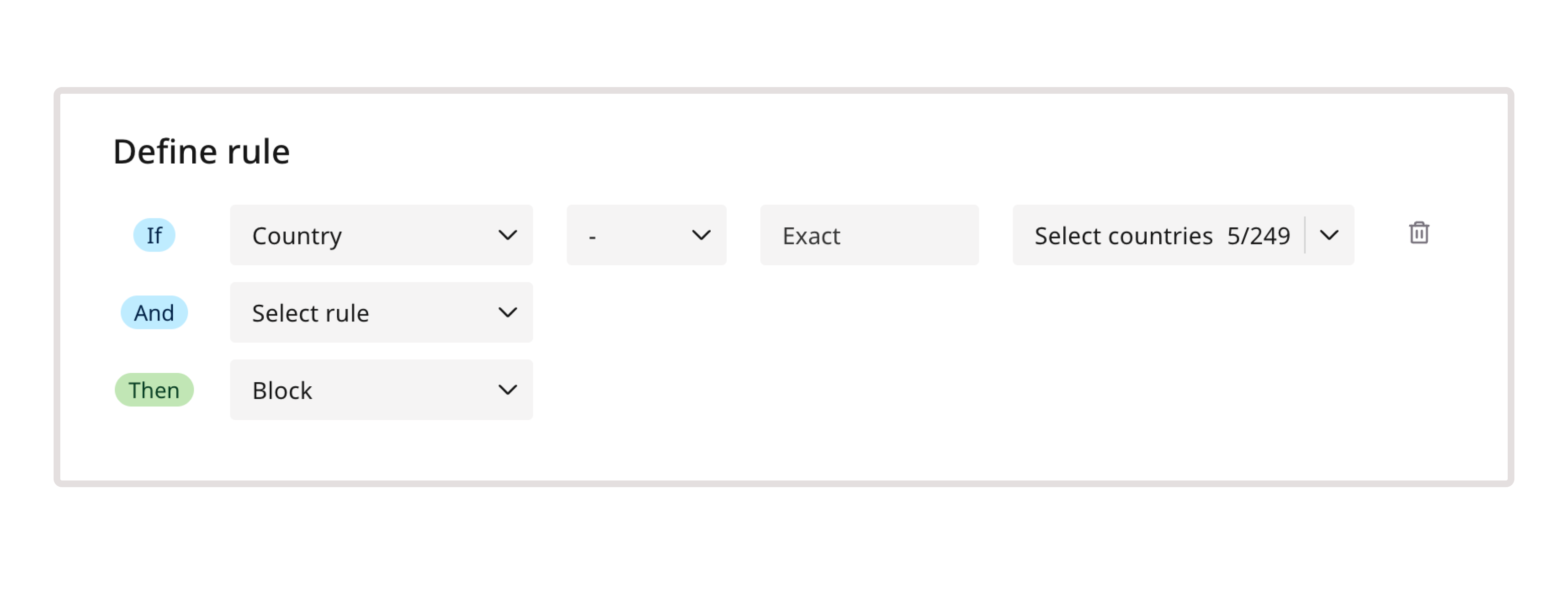
Rules with organization conditions
Rules that contain the Organization condition allow you to enforce security controls on incoming traffic based on the specific organization that the request comes from. To create a rule: 1. In the IF section, select Organization from the dropdown. 2. In the following dropdown, select Not to apply the rule to every organization except for the specified one. To apply the rule only to the specified organization, select —. 3. Choose the organization. 4. (Optional) Select another condition in the AND section. 5. In the THEN section, select the needed action that will be enforced when the rule is triggered. 6. Click Save.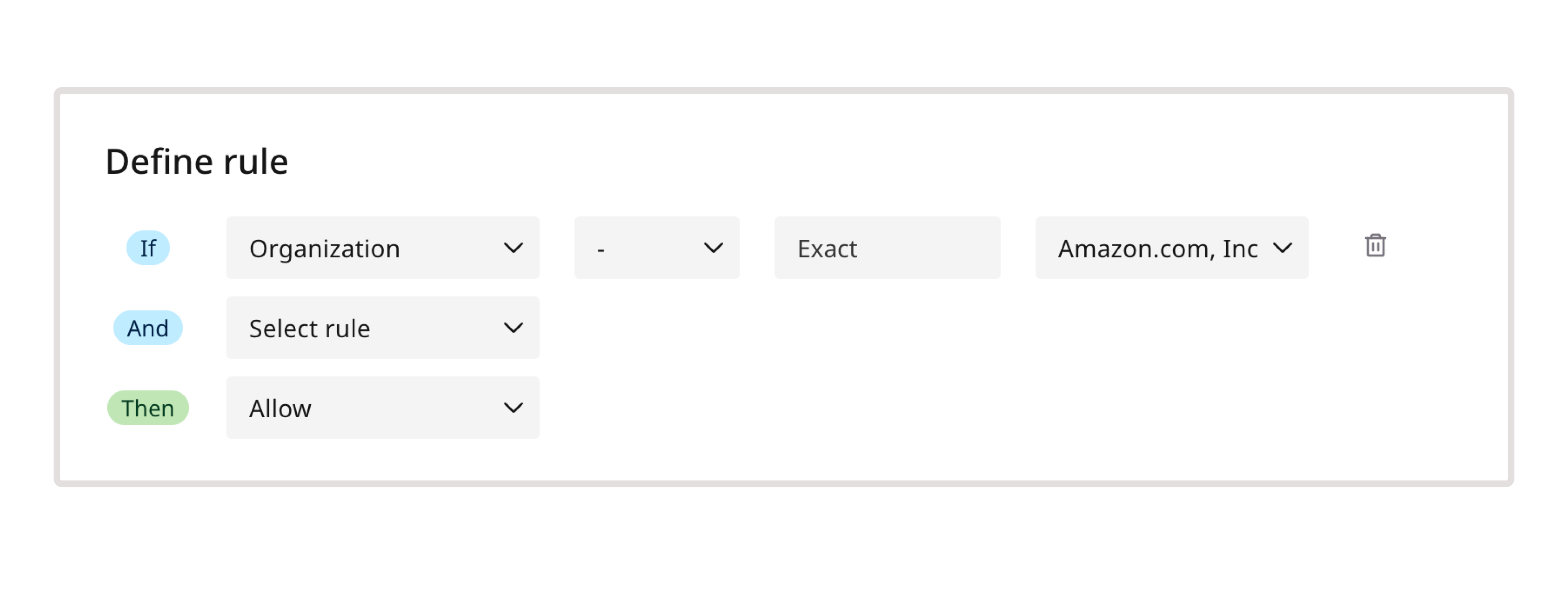
Rules with owner types conditions
Rules that contain the Owner types condition allow you to enforce security controls on incoming traffic based on a specific category associated with a related IP range. Such categories can be commercial, educational, or government. The information about these owner-type categories is pulled from the global WHOIS database. To create a rule: 1. In the IF section, select Owner types from the dropdown. 2. In the following dropdown, select Not to apply the rule to every owner type except for the specified one. To apply the rule only to the specified owner type, select —. 3. Choose the Owner type from the dropdown. 4. (Optional) Select another condition in the AND section. 5. In the THEN section, select the needed action that will be enforced when the rule is triggered. 6. Click Save.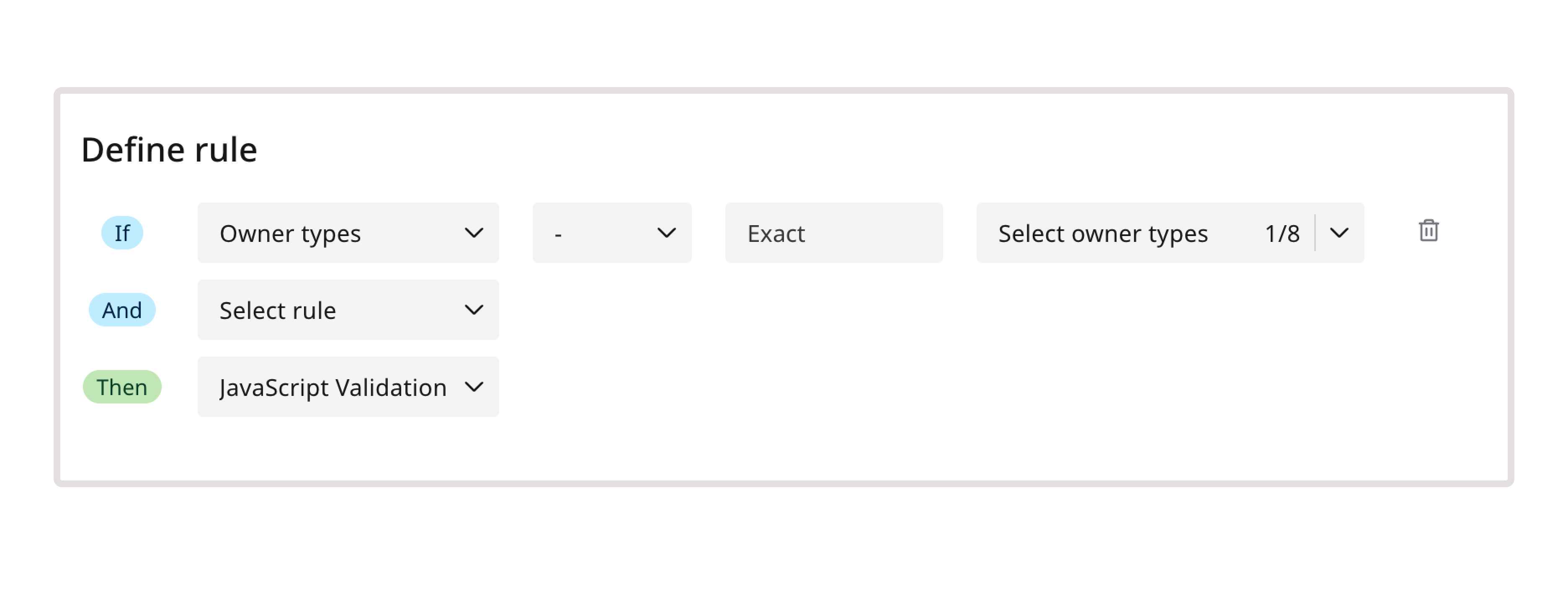
Rules with session request count conditions
Rules that contain the Session request count condition allow you to enforce security controls on incoming traffic based on the number of requests made in a session (per session ID). To create a rule: 1. In the IF section, select Session request count from the dropdown. 2. In the following dropdown, select Not to apply the rule if the total number of requests in the session is anything other than the specified one. To apply the rule only when the total number of requests in the session is exactly as specified, select —. 3. Enter a particular number of requests. 4. (Optional) Select another condition in the AND section. 5. In the THEN section, select the needed action that will be enforced when the rule is triggered. 6. Click Save.
Rules with tag conditions
Rules that contain the Tag condition allow you to enforce security controls on incoming traffic based on a specific tag within the request. For more details on how to create and manage tags, check out Tag generating rules.InfoYou can’t add more than 5 tags to the Tag condition.
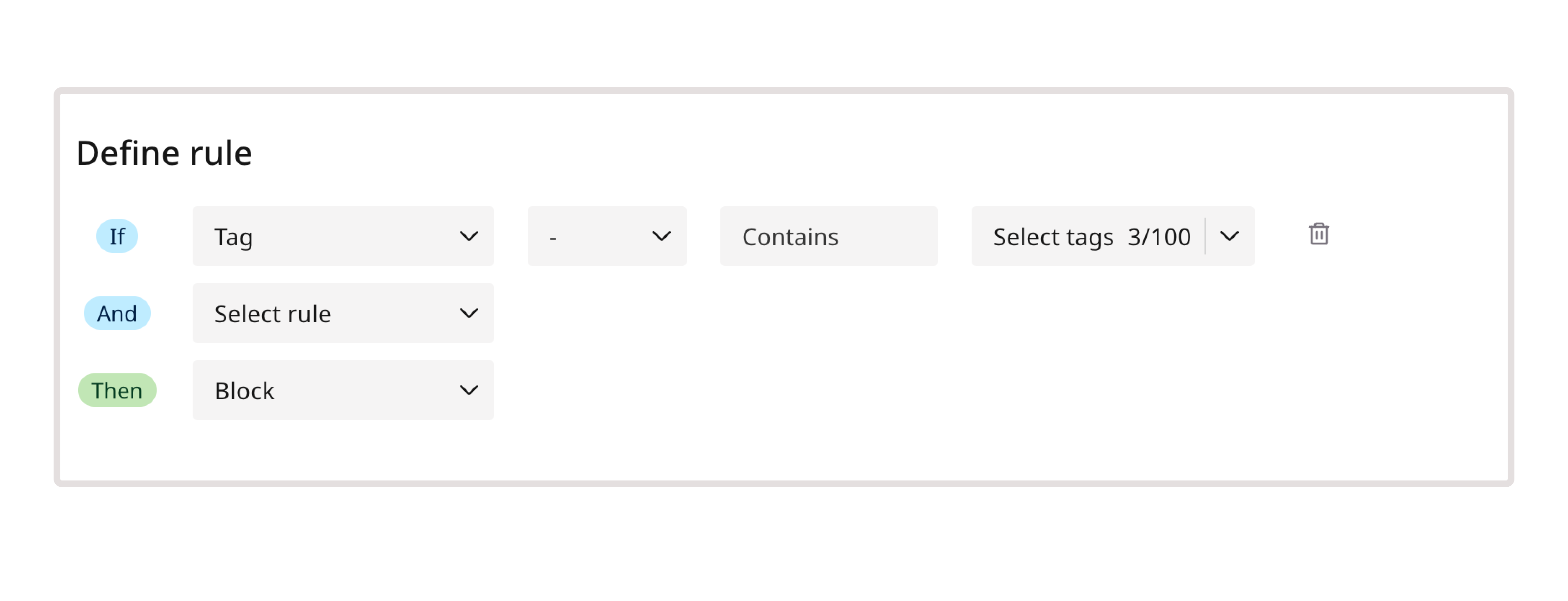
Rules with user-defined tag conditions
Rules that contain the User-defined tag condition allow you to enforce security controls on incoming traffic based on a specific user-defined tag within the request. To create a rule: 1. In the IF section, select User-defined tag from the dropdown. 2. In the following dropdown, select Not to apply the rule to every tag except for the specified one. To apply the rule only to the specified tag, select —. 3. Choose one or more user-defined tags. 4. (Optional) Select another condition in the AND section. 5. In the THEN section, select the needed action that will be enforced when the rule is triggered. 6. Click Save.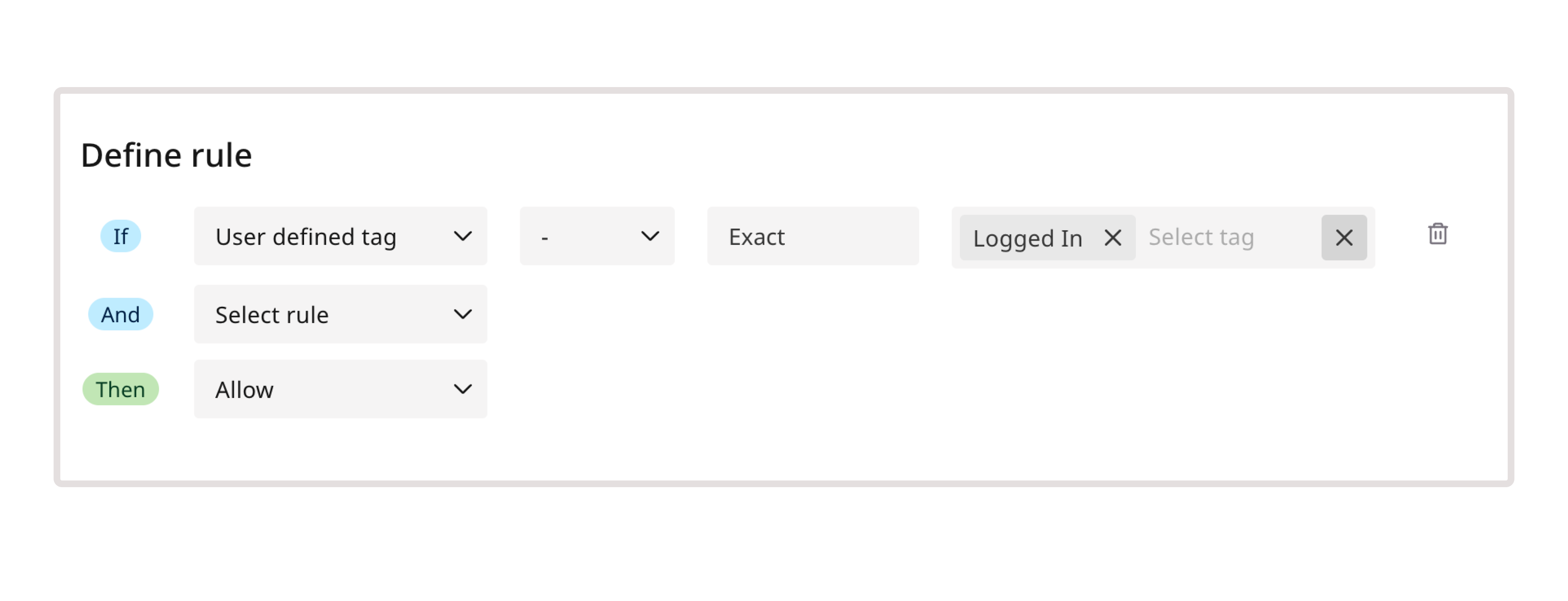
Create custom rate limit rules
You can create a rate limit rule to limit the number of requests users are allowed to perform against a specific URL. The information about request frequency can also be used to learn about user interaction with your domain. To create a rule: 1. In the Gcore Customer Portal, navigate to WAAP > Domains.
- Rule name : enter a descriptive name for your rule.
- Rule status : enable this toggle if you want to activate the rule after creation. Otherwise, the rule will be disabled, and you can enable it later.
- Rule type : choose Rate limit rule.
- Description (optional): provide more context about your rule.
InfoThe minimum number of requests required to trigger a request rate condition is 21.
InfoThe Duration field determines the number of requests that will be counted within the specified timeframe. You can’t change the duration of actions (e.g. for how long user requests will be blocked) in the rate limit rules. This is only possible by using the
actionDuration parameter from our API.-
To protect all application pages, leave the field blank or enter a slash (
/). -
To protect a specific page, enter a URL, such as
/login.
InfoIf you specify a URL, HTTP method, or IP address, the rule will only apply to requests that match these fields. If you leave these fields empty, then the rule will be enforced on all requests.
Manage existing rules
You can edit the rule name and description, modify its conditions and status, and delete the rule if you no longer need it. If you have many rules, you can also search for rules by name to find the one you need.Edit a rule
1. In the Gcore Customer Portal, navigate to WAAP > Domains.
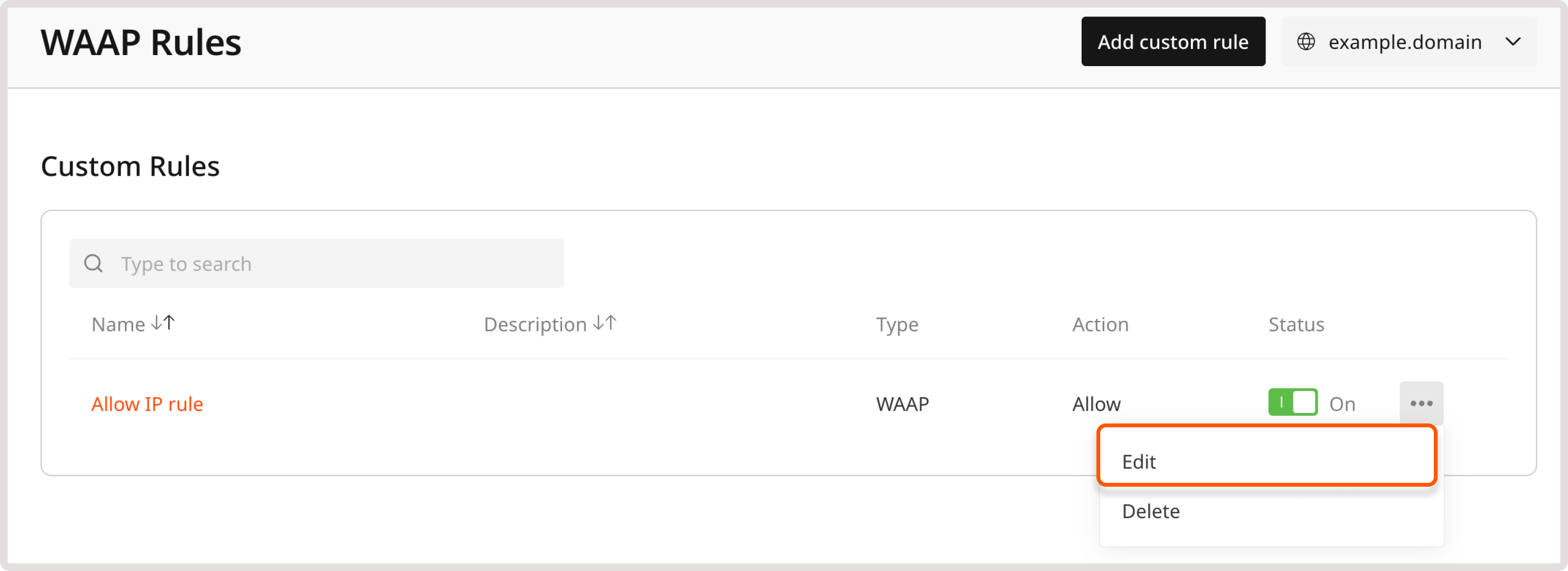
Delete a rule
1. In the Gcore Customer Portal, navigate to WAAP > Domains.
